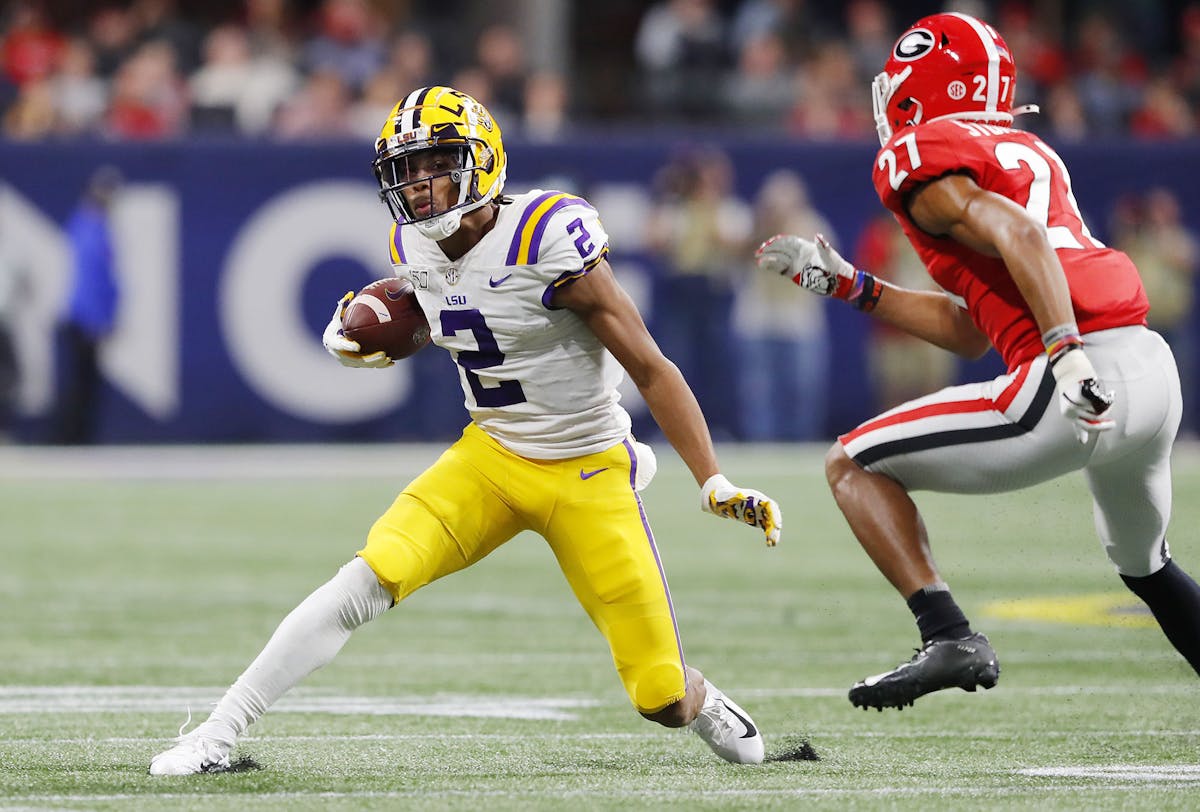Tyler Johnson is trying to be faster. His perceived lack of speed has been the one knock on his portfolio entering the NFL draft.
But that doesn't mean he's just been sprinting the 40-yard dash again and again and again for the past four months.
Squats. Dead lifts. Bench pressing. Exploding from the three-point stance. Gliding through his first 10 strides. Leaning into the finish. The former Gophers standout receiver has honed those skills and more ahead of learning his professional fate in a week.
"It's crazy because your arms correlate with your legs. Nobody even thinks that, but that's something I learned over the past few months," Johnson said. "You don't just do the speed work. That's not where you get faster."
All that effort, and it turns out, Johnson will enter the NFL without ever publicly running the 40-yard dash. He decided to skip the measurement at the scouting combine in Indianapolis back in late February, opting to continue training and debut his time at the Gophers' pro day March 25.
But then the coronavirus pandemic shut everything down, leaving Johnson without an opportunity to quash one of his biggest critiques — one that could potentially drop his draft stock. Most experts consider him a Day 3 pick, during Rounds 4 through 7.
"It is a little upsetting, honestly, putting in all that hard work throughout the past [months] and was very excited for the progress that I was making," Johnson said. "I felt good, I felt comfortable about what I was going to end up doing on pro day. … But then again, it's out of my control."
The Minneapolis North product has been training from home this past month, working from afar with ETS Performance founder Ryan Englebert. Englebert took over Johnson's training a week before the combine, after Johnson had spent about a month at EXOS in Carlsbad, Calif.
Johnson doesn't have access to a ton of equipment, so his workouts now revolve around jogs and creative at-home exercises. But Englebert said Johnson has been progressing "extremely well" despite those challenges and probably would have tested strongly — if he had the opportunity.
Speed training
Englebert said speed can improve through weight room work. But the biggest leaps an elite athlete can make in the few months between the end of the college football season and the NFL draft has to do more with refining mechanics than actually gaining more speed.
"To get them a tenth faster, two-tenths faster of true speed in four to six weeks, for people that say they can do that, nine times out of 10, they're full of it," Englebert said. "… If I'm going to improve someone's 40 time by a tenth of a second in a month … it's going to be [through] mastering the start because you can lose a tenth, gain a tenth, in your 40-yard dash just by having the right technique."
Scouts will never know for sure Johnson's true 40 time since they couldn't clock it in person. But there is something millions of people have seen Johnson do live — score on the field.
Johnson set program records through four years with the Gophers, amassing 3,305 receiving yards and 33 receiving touchdowns. He also bested his own single-season marks in those categories set his junior year, ending 2019 with 1,318 yards and 13 touchdowns.
Gophers receivers coach Matt Simon said those stats alone prove Johnson has something special, especially because he played quarterback in high school, only learning receiver in college.
Simon said what makes Johnson different is his ability to process information on the fly and adjust. He doesn't have to think during the game, just act. And while speed helps maximize separation and is a coveted skill at his position, Johnson is more multifaceted than just being quick.
"I know one thing: You put on his film, there weren't very many times where he got caught from behind," Simon said. "I know if he was a slow player, that post he caught against Auburn [in the Outback Bowl], he wouldn't have been as open as he was, and he probably wouldn't have been able to run away from the guy.
"… He plays the game so much faster than whatever that [40] number ends up being."
Results matter most
Johnson admitted speed is a real asset for a go-route, just a straight shot to the end zone. But he prides himself on his ability to make breaks to space himself from defensive backs and disguise what he's going to run.
He attributes that development to Simon and Gophers coach P.J. Fleck, who is also a former wide receiver and position coach. They came in after Johnson's freshman season and taught him basically everything he knows. Simon heaped that praise back on Johnson, saying his Big Ten productivity doesn't lie.
"I hope that teams will end up looking past maybe what a number would be or speculating," Simon said. "Because you watch him on film, and you don't say, 'He's a slow player.' He doesn't play that way. And trust me, I'm not calling Tyler slow."
Whatever happens next week, Johnson is keeping his same even-keeled mind-set. He can't control how fast people think he is, what round he will go in, what teams believe in him or don't. All he can do is keep working, stay hungry and focus on the grander scheme.
"It's achievement at another level, and I'm still blessed to be in the position that I'm in," he said. "And I can't wait to see what the future holds."

Seven reasons for fans to pay more attention to Minnesota United



